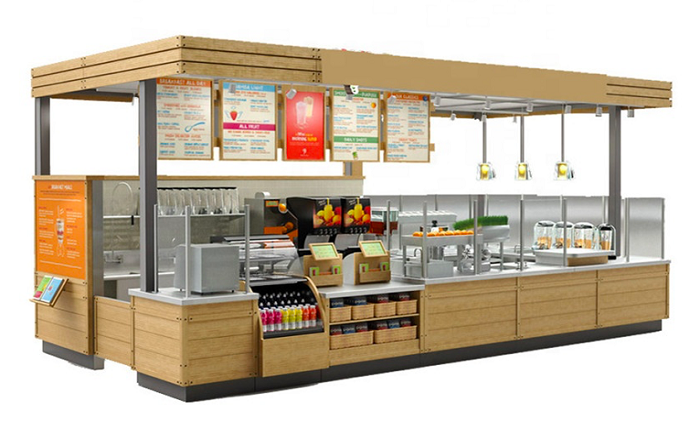Starting a food kiosk can be an exciting venture for aspiring entrepreneurs looking to enter the vibrant world of food service. Whether you dream of serving up gourmet treats or providing quick bites to busy shoppers, a food kiosk can be a profitable and fulfilling business opportunity. To help you navigate the process, here’s a step-by-step guide to launching your successful food kiosk.
1. Research and Planning
Before you dive into the specifics of your food kiosk business, it’s essential to conduct thorough research and develop a solid plan. Start by exploring potential locations for your kiosk. Consider high-traffic areas such as shopping malls, business districts, parks, or event venues where foot traffic is abundant.
Next, research your target market. Understand their preferences, dietary trends, and purchasing habits. This information will guide your menu development and marketing strategies.
2. Define Your Concept and Menu
Your food kiosk’s concept and menu are crucial factors that will set you apart from competitors. Consider what type of food you want to offer—whether it’s gourmet sandwiches, healthy salads, ethnic cuisine, or indulgent desserts. Your concept should align with your target audience’s tastes and preferences.
Create a menu that is both appealing and feasible within the confines of a kiosk setup. Keep it concise but diverse enough to cater to different tastes. Ensure your menu items can be prepared quickly and efficiently to accommodate high-volume sales periods.
3. Develop a Business Plan
A well-crafted business plan is essential for securing funding, attracting investors, and guiding your business decisions. Your plan should include an executive summary, business objectives, market analysis, competitive analysis, marketing strategies, operational plan, and financial projections.
Detail your startup costs, including kiosk rental fees, equipment purchases or leases, initial inventory, licensing and permits, and marketing expenses. Outline your pricing strategy and sales projections based on your market research.
4. Secure Permits and Licenses
Complying with local regulations is critical when starting a food kiosk business. Obtain the necessary permits and licenses required to operate legally in your chosen location. This typically includes health permits, food handler permits, business licenses, and possibly zoning permits depending on where you plan to set up your kiosk.
5. Choose the Right Location
The success of your food kiosk largely depends on its location. Look for a spot with high foot traffic and visibility. Consider factors such as proximity to your target market, competitors, parking availability, and lease terms. Negotiate with property managers or landlords to secure a favorable rental agreement.
6. Design Your Kiosk
The design of your food kiosk should be functional, attractive, and aligned with your brand image. Work with a professional designer to create a layout that maximizes efficiency and customer flow. Consider incorporating eye-catching signage, attractive displays for your menu items, and an efficient workspace for food preparation.
7. Source Quality Ingredients and Suppliers
The quality of ingredients is paramount to the success of your food kiosk. It’s crucial to forge partnerships with dependable suppliers capable of consistently delivering fresh, high-quality ingredients. Moreover, consider sourcing locally grown produce or specialty ingredients to enrich the distinctiveness of your menu offerings.
If your food kiosk involves contract packaging, ensure your suppliers meet the stringent standards necessary to maintain the quality and appeal of your products. This approach not only enhances customer satisfaction but also strengthens your business’s reputation for excellence in ingredient sourcing and product quality.
8. Marketing and Promotion
Develop a marketing plan to create awareness and attract customers to your food kiosk. Utilize social media platforms, local advertising, and partnerships with nearby businesses or events to promote your launch. Offer special promotions, discounts, or samples to encourage trial and repeat business.
9. Provide Excellent Customer Service
Customer service is key to building a loyal customer base. Train your staff to deliver friendly, efficient service and maintain cleanliness and hygiene standards at all times. Listen to customer feedback and continuously strive to improve your offerings based on their preferences and suggestions.
10. Monitor Performance and Adapt
Once your food kiosk is up and running, closely monitor key performance indicators such as sales metrics, customer feedback, and inventory turnover. Stay adaptable and be prepared to make adjustments to your menu, pricing, or marketing strategies based on market trends and customer demand.
Conclusion
Starting a food kiosk business requires careful planning, attention to detail, and a passion for food and customer service. By following these steps and staying committed to delivering a quality product, you can set yourself up for success in the competitive food service industry. Remember, consistency, creativity, and customer satisfaction are the keys to building a thriving food kiosk business.



